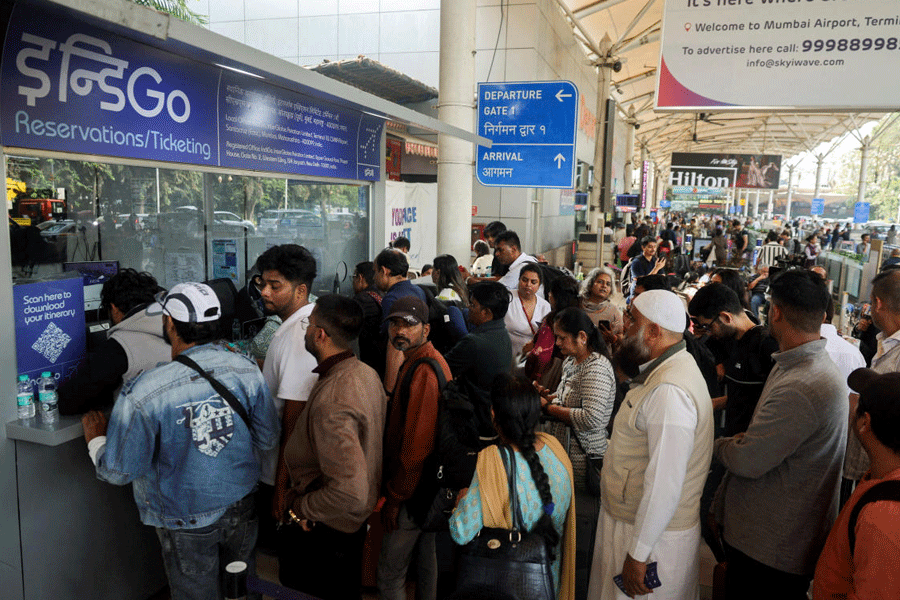On a recent Saturday night, the street outside the nightclub Tube VR looked typical for East London: a boat moored on the canal, trendy retail spaces lining the waterfront, an underpass covered in graffiti. Inside, however, I found myself dancing next to a hedgehog wearing a top hat, an animé nun with an acid-green halo and a humanoid fox in hot pants.
Tube VR is a venue and one of the most popular party events on VRChat, a video-game-like social platform that takes place in virtual reality, or VR, where users can assume fantastical avatars of their own design. When I removed my VR headset, I was alone in my bedroom.
During the height of the pandemic, partygoers flocked to virtual clubs hosted on platforms such as Zoom, but since physical venues have reopened, the popularity of these spaces has waned. Not so with VRChat. When much of the world was locked down, the platform’s daily user numbers steadily increased. That trend has mostly stuck.
To attend a virtual club in VRChat, you only need a standard PC, but getting the most immersive experience requires a VR headset, and a moderately powerful computer. The Tube nightclub is just one of the thousands of discrete VRChat worlds where people socialise in avatar form
I felt out of place at my first VR party. There was a new social etiquette to learn around how to approach and talk to other clubbers, and I felt my default avatar looked basic compared with the imaginative creatures surrounding me. But with my headset translating my voice and movements into the virtual space and avatars dancing and chatting all around me, it felt surprisingly close to being in a real club.
This experience provides a glimpse of how socialising might look in our increasingly technologically mediated future. “Just as video conferencing via Zoom has become a part of life for so many people, it’s easy to imagine that in 10 years’ time, VR could be playing that role” in daily socialising, too, said David Chalmers, a professor of philosophy and neural science at New York University, US.
Naturally, some aspects of VRChat cannot compete with real life. VR events suffer frequently from delays and glitches, but also offer advantages. Personal safety is less of a concern; users have more control over their environment, and can adjust the volume of voices or the music; and aside from the upfront hardware cost, events are free.
This increased accessibility is particularly meaningful for people who live far from clubbing hot spots, and for users with impaired mobility. Turels was a professional musician until he was diagnosed with Still’s disease, a form of arthritis that meant he could no longer use his hands to play instruments. “I thought I was done — time to pack up my music equipment and sell it off,” said Turels. But friends he made in the virtual club encouraged him to try out DJing in VR using specially adapted hardware. He now performs music in VRChat. “VRChat has given that part of my life back to me,” he said.
On any given weekend, there are dozens of VRChat parties. There is Mass, a rave inside the head of a giant robot; Shelter, a popular club that evolves according to a conceptual sci-fi narrative; and Ghost Club, a pioneering Japanese venue that users enter via a phone booth. Each “VRchitect” who constructs a club makes the most of their freedom from the constraints of budget and physical space.
One of VRChat’s distinguishing features is that almost all of its content is created by its users. There are few opportunities to monetise their in-game creations, and while some venues run Patreon pages to cover costs, a vast majority are created and run by volunteers.
VRChat itself is free to use and largely funded by investors. This caution around monetisation has fostered a club scene that feels authentically grassroots. There are, however, plans to introduce a creator economy in the near future. The ravers are just one of VRChat’s major communities. There are also LGBTQ groups, worlds dedicated to role-playing, dancing, Buddhist meditation and erotic encounters. A deaf community teaches VR sign language in a virtual school.
The avatars that users choose are often cartoonish, but the relationships they build in VRChat are unquestionably human.
“I met so many new people I call my best friends, who I also met up with in real life,” May S. Lasch, who runs the LGBTQ club Concrete on VRChat, said. “In the end, VR is about the people, not the technology.”
NYTN










